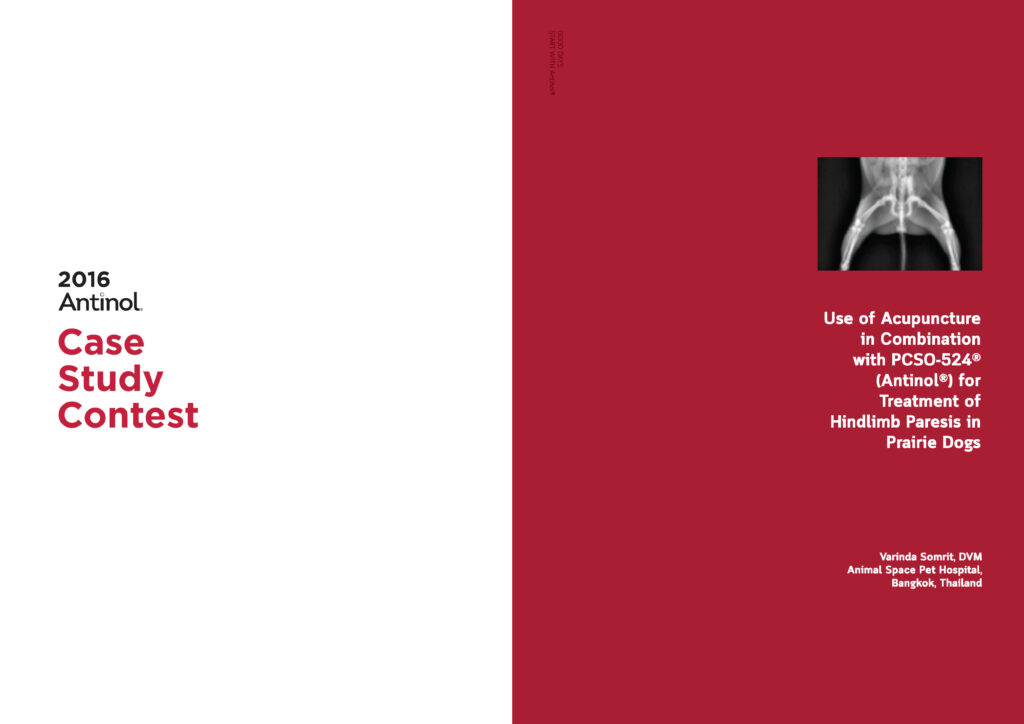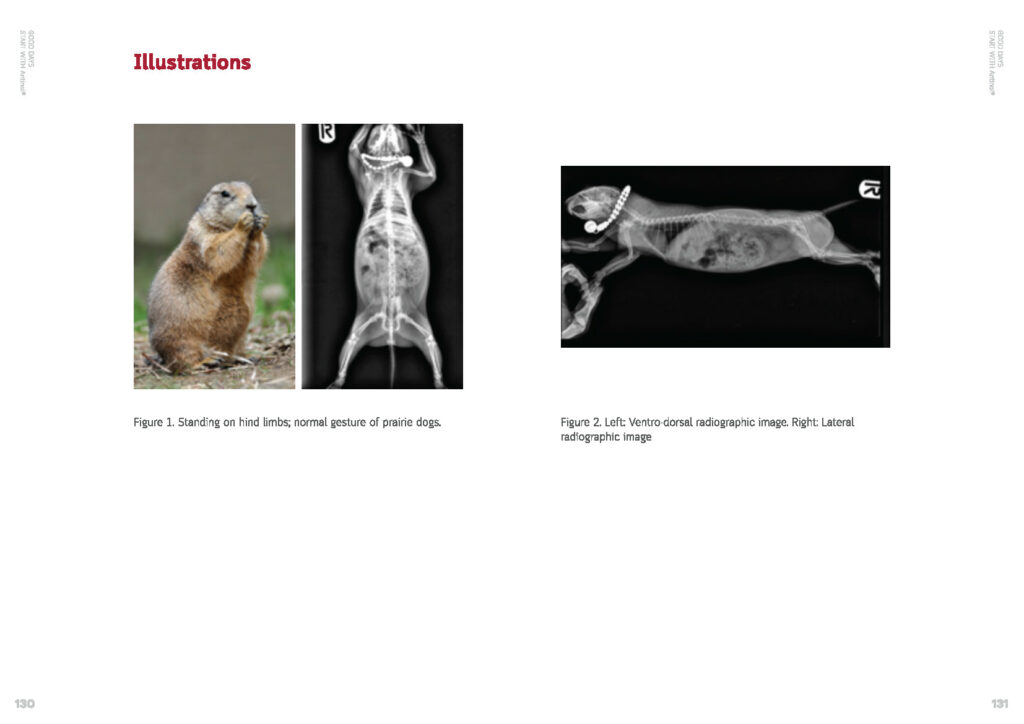Use of Acupuncture in Combination with PCSO-524® (Antinol®) for Treatment of Hindlimb Paresis in Prairie Dogs



Antinol® Cases Study 2016 Content
3rd Winning Award
Use of Acupuncture in Combination with PCSO-524® (Antinol®) for Treatment of Hindlimb Paresis in Prairie Dogs
Varinda Somrith, DVM, Animal Space Pet Hospital
Abstract
A prairie dog was admitted to the hospital due to falling from a height accident.
During 2 weeks of admission, the animal was treated with steroid and vitamin B, however, no response was observed.
Alternative medicine; acupuncture, was then applied in combination with PCSO-524® (Antinol®) to enhance the effects of acupuncture on pain relief and repairing the damaged neurons.
Excellent recovery was observed after 1 month of the treatment.
The animal could stand in normal position, express other normal gestures, and the reflex was nearly fully recovered.
Keywords: Prairie dogs, Antinol®, PCS0-524®
Treatment plan
Dry needle acupuncture and electro acupuncture were exercised with supplementation of 1 tablet of PCS0-524® (Antinol®) daily.
Positions for the acupuncture included BL-21, BL-23, BL-25, BL-26, BL-40, BL-62, BL-65 and Bai-Hui.
The acupuncture positions were changed each week, most of which were along thoracolumbar vertebrae where the damage was likely. Pain relieving effect and stimulation of neurons were expected from the acupuncture.
Each acupuncture session took only 5-10 minutes maximum since the animal did not cooperate with the treatment.
Treatment outcome
After the second treatment (day 14), the owner started to observe the improvement of hind limb muscle control. The animal was able to stand on hind legs.
The reflex examination showed better response compared to the previous examination.
After the third treatment (day 21), footstep was nearly normal with slightly shuffle and reflex examination showed normal result except for anal reflex.
Urinary incontinence had disappeared. Sitting on the hind limb position was feasible with little help and the muscle tone was improved when compared to the previous week (Table 1).

 Authors:
Authors: